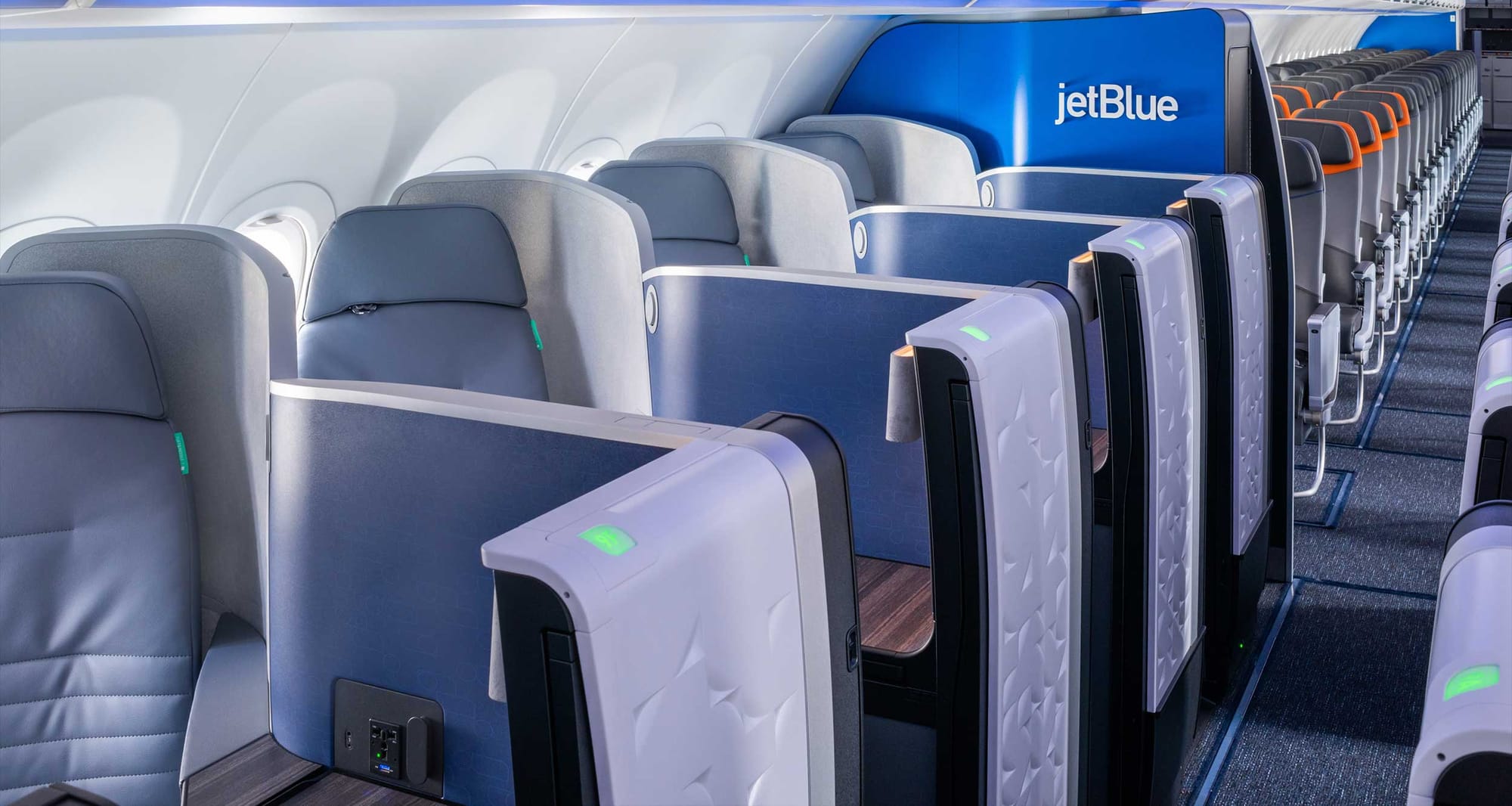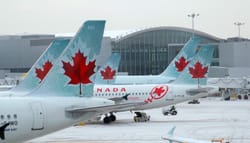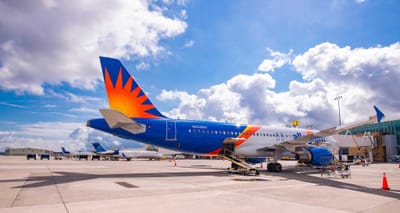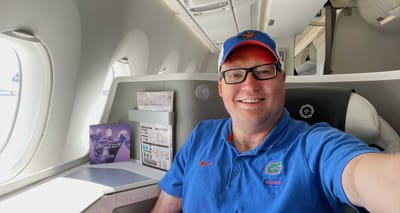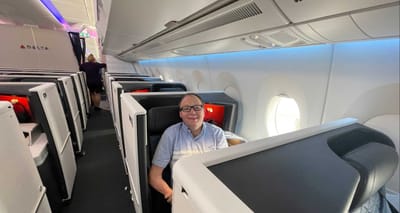In preparation for its first transatlantic fright from New York to London in 2021, JetBlue announced a dramatic update to its Mint business class seats. Early photos of the seat raised significant concerns about accessibility for disabled passengers, a concern that JetBlue has not addressed publicly. Earlier this month, I finally had the opportunity to test out the new “Mint Suite” on a flight of 6+ hours from Boston to Los Angeles.
While I will make the argument that the JetBlue Mint Suite is the least accessible business class seat flying today, I’ll still review the entirety of the flight experience, including the food & beverage offering which other reviewers have claimed really stand out for a U.S. carrier. Here are some basic flight details to get started with the review:
Airline/Flight: JetBlue Airways, B6 810
Route: BOS-LAX — Boston, Massachusetts to Los Angeles, California
Flight Date: August 2, 2023
Scheduled Departure/Arrival: 6:00 a.m. / 9:11 a.m.
Scheduled Flight Length: 6 hours, 11 minutes
Aircraft: Airbus A321neo
Registration: N2142J
Seat: 05F
The Airbus A321 is the core of JetBlue’s fleet, with a longer range Airbus A321LR operating on the transatlantic routes from Boston and New York to Amsterdam, London and Paris. While this flight was not operated by an A321LR, the business class seats are identical to those found on the longer range aircraft (and neither have an accessible lavatory!).
How I booked the flight
This flight was purchased using JetBlue TrueBlue frequent flyer points that were earned with the JetBlue Plus Credit Card, with the total cost being 55,600 TrueBlue points plus $5.60 in taxes and fees.

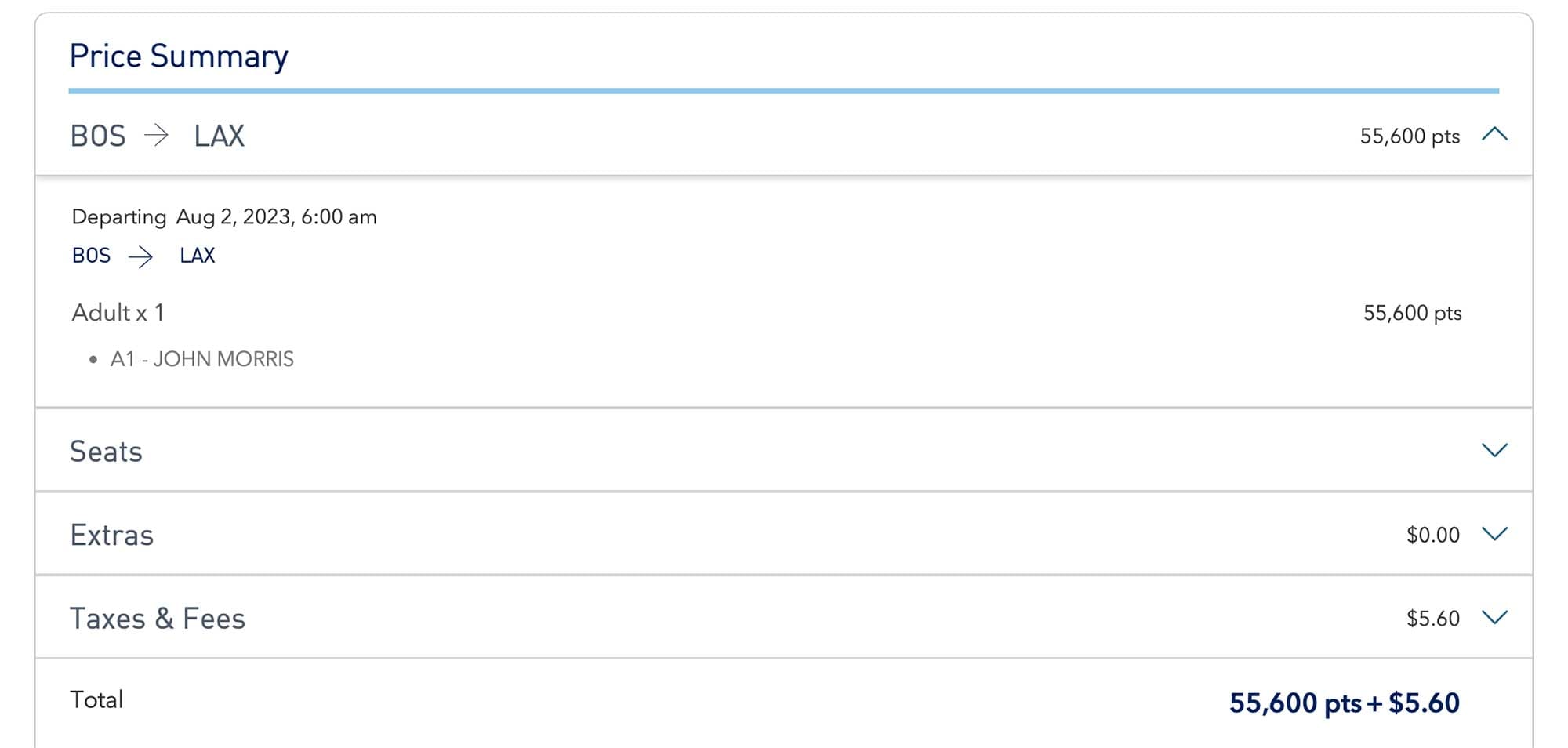
To learn more about how you can earn points and miles through credit card sign-up bonuses, read my guide to the best credit cards for travel rewards.
JetBlue Airways Airbus A321neo with Mint Seating Layout
JetBlue has multiple versions of the Airbus A321 with Mint, as well as airplanes with the legacy Mint seating product, and select aircraft types with the updated Mint Suite reviewed here. The Airbus A321LR features 24 Mint Suites, however the domestic version used on my flight to Los Angeles had only 16.
The economy class cabin, located behind the 8 rows of Mint Suites, consists of 42 “Even More Space” seats and 102 “Core” seats. Economy class uses the Collins Meridian seat product, which features a 4-way adjustable headrest and individual 10.1″ seat-back screen. Even More Space seats have 35 inches of pitch, while standard “core” seats have 32 inches of pitch.
Business Class “Mint Suite” on the JetBlue Airbus A321neo
JetBlue’s updated Mint Suite is an inward facing herringbone seat that was designed by Acumen and is based on the Thompson Aero Vantage Solo platform. It features retractable privacy doors, however the one at my seat was not functional.
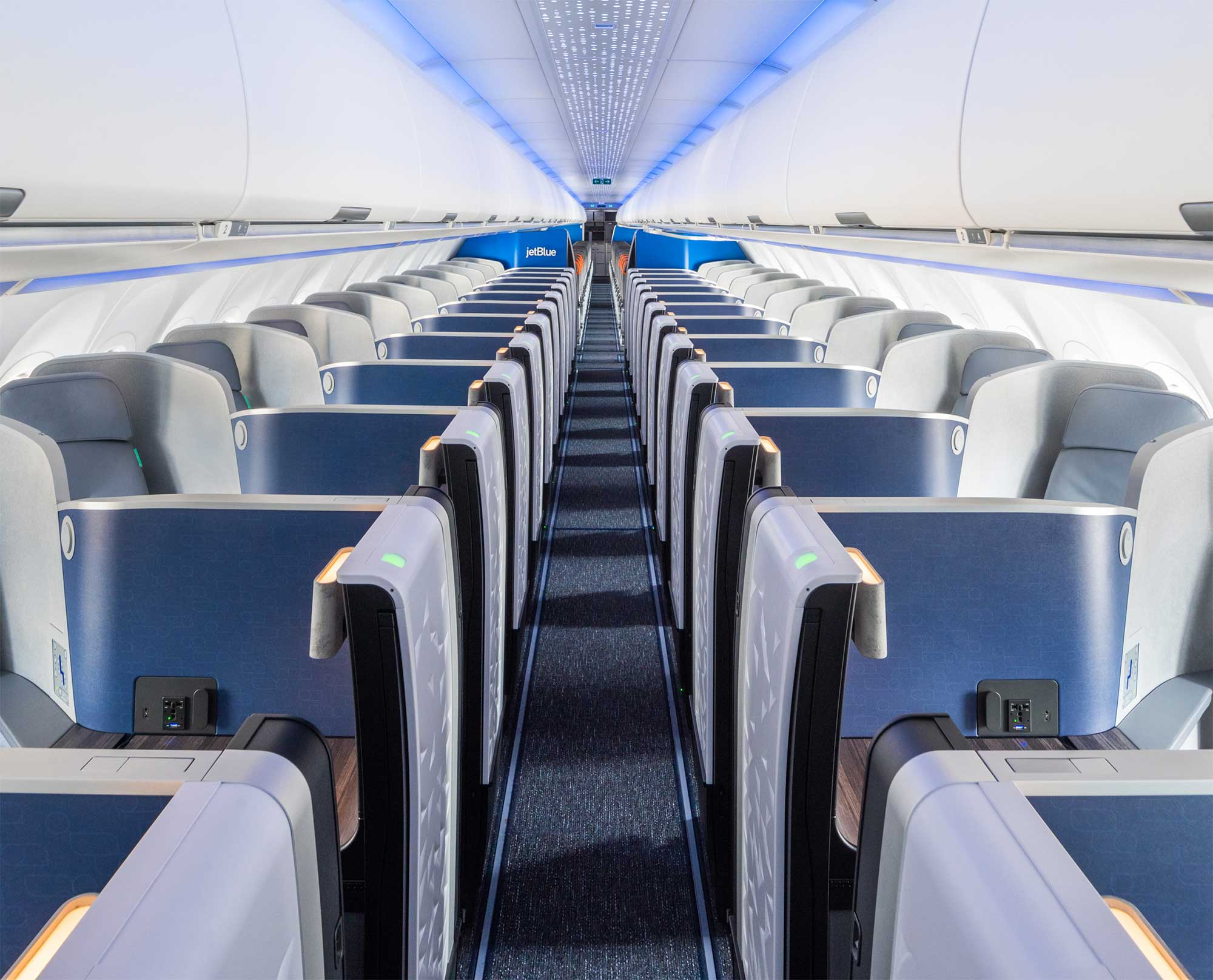
The herringbone seat faces away from the window and so, despite every Mint Suite being at the same time both a window and aisle seat, it is not easy to actually look out of the window. The design and position of the seat makes accessibility difficult for wheelchair users, but I’ll save that discussion for later in this review.
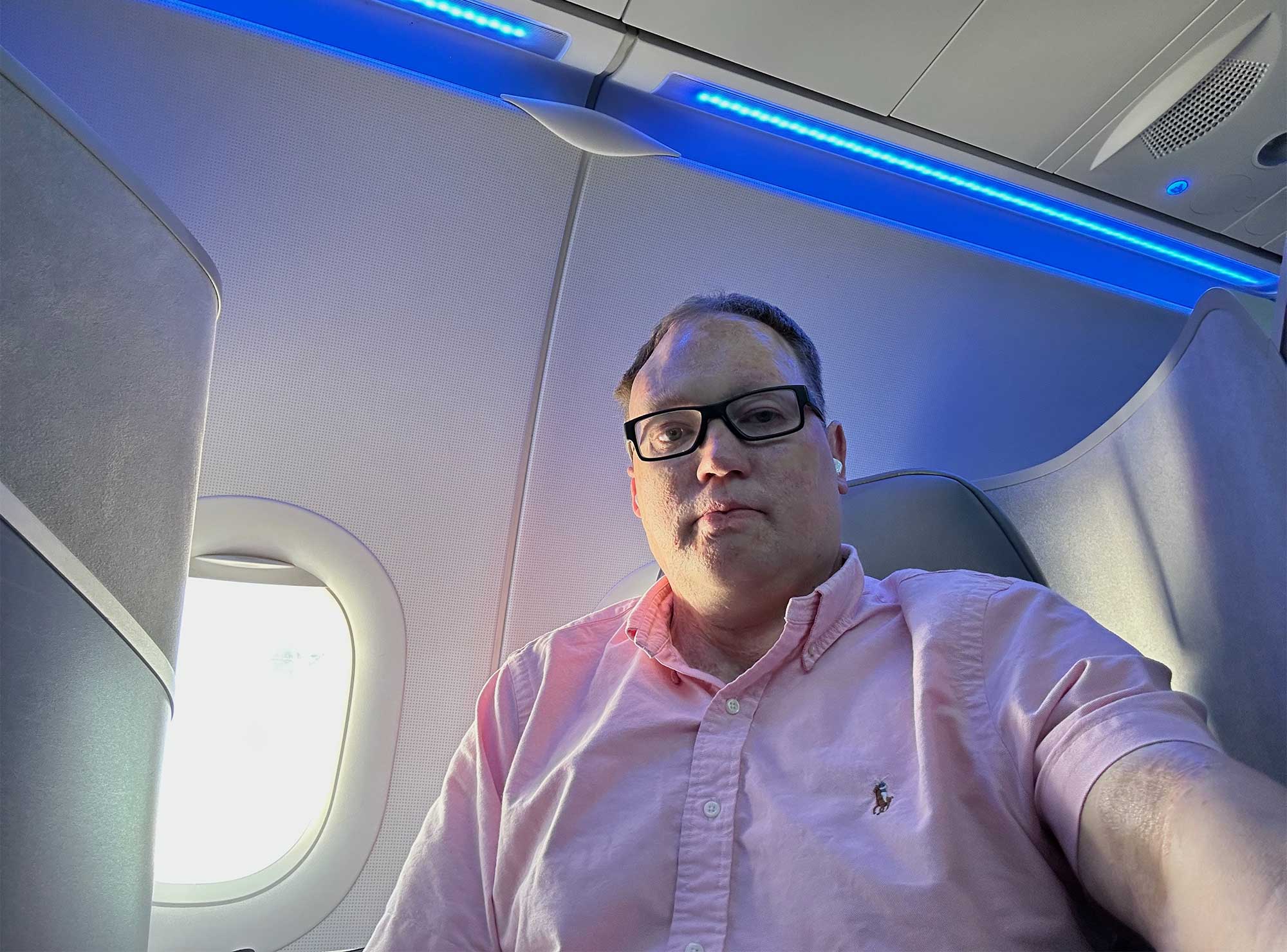
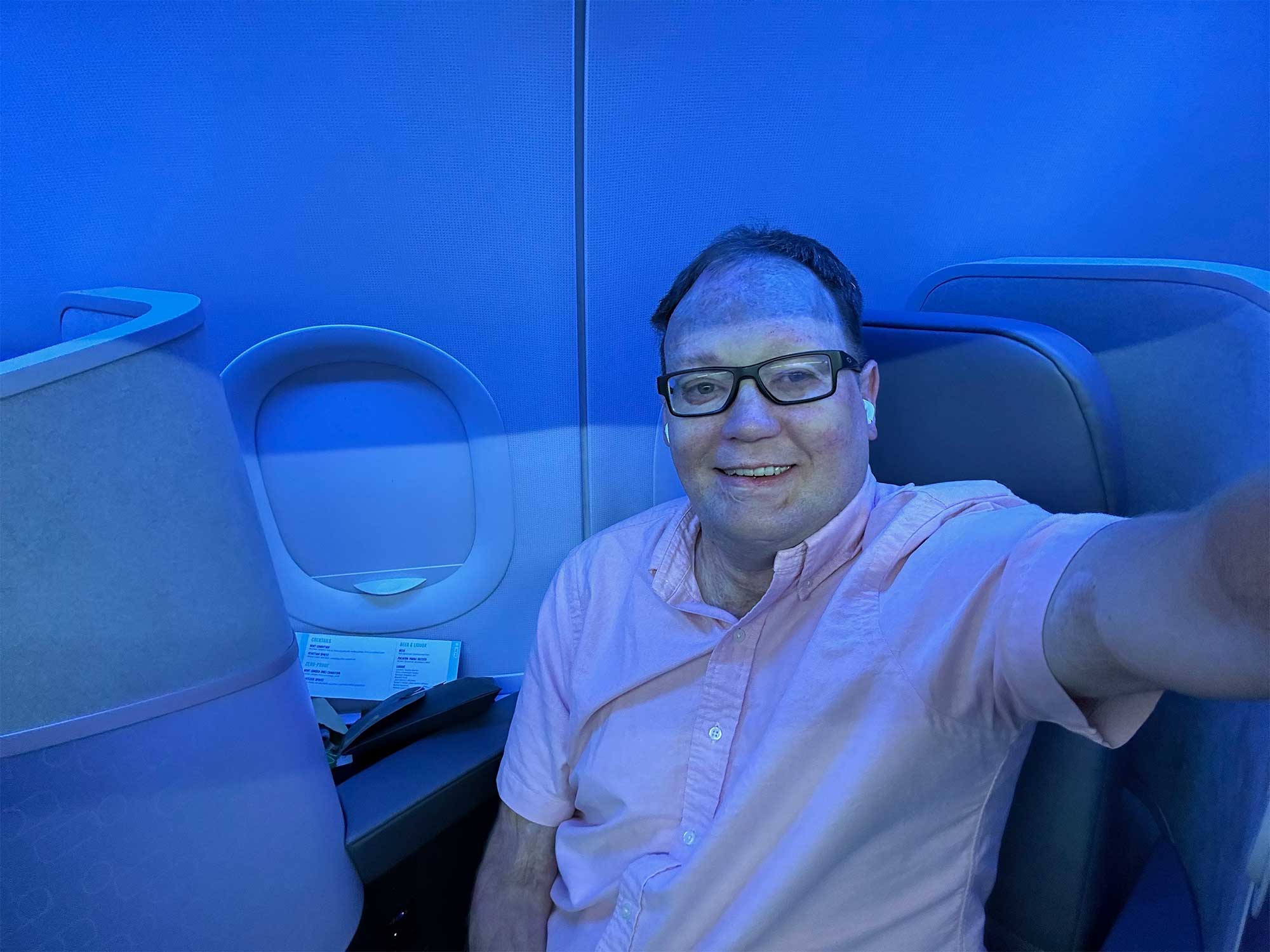
Here are a couple of selfies taken in the seat for good measure. You’ll notice how I was facing away from the window while seated. Why have a window at all?
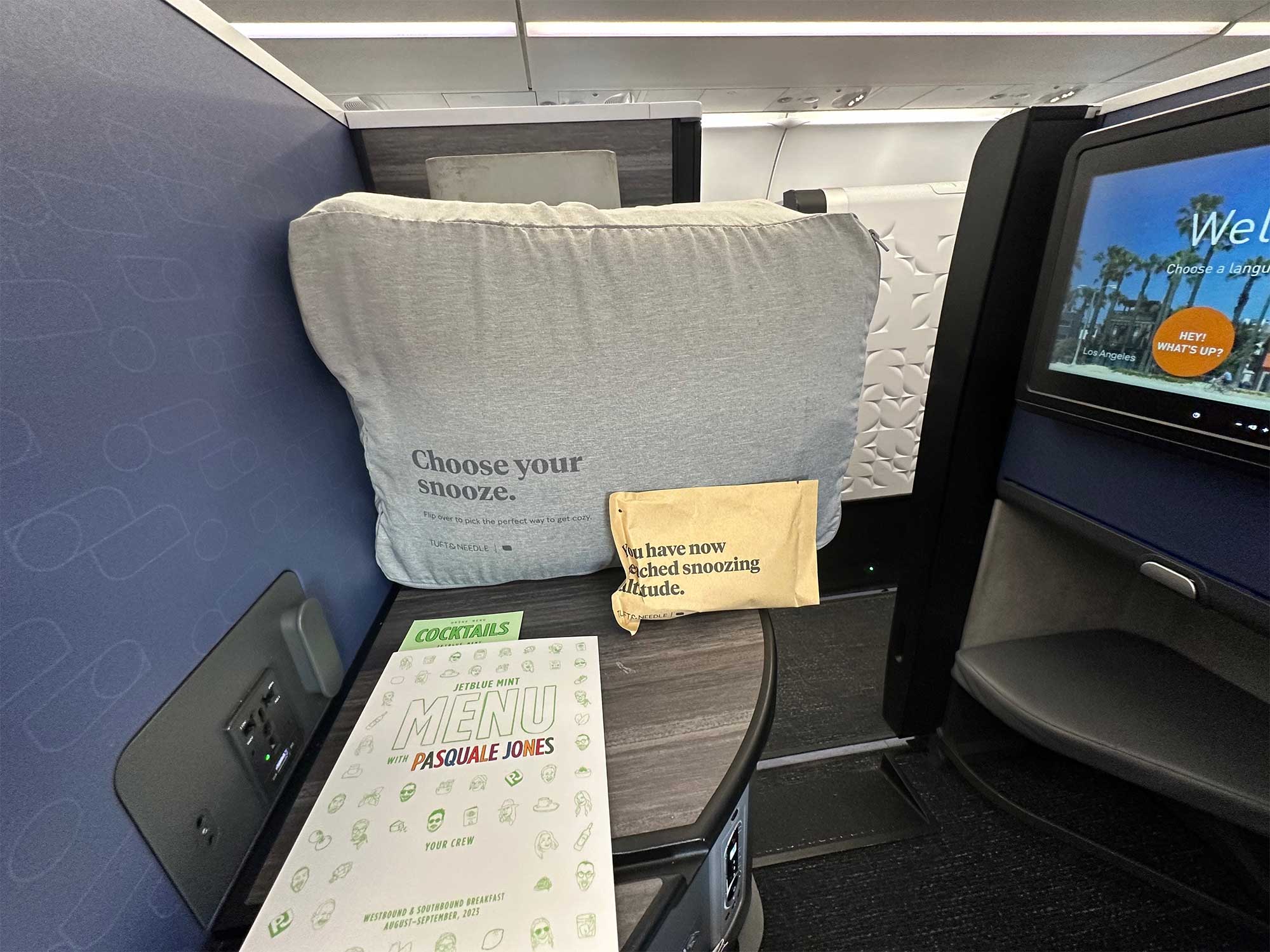
Once I was seated in the suite, I took note of some of its features: a retractable tray table, static cocktail table, and a plush bedding set from Tuft & Needle . The seat converts to a 77″ long fully-flat bed, which I put to the test following breakfast service.
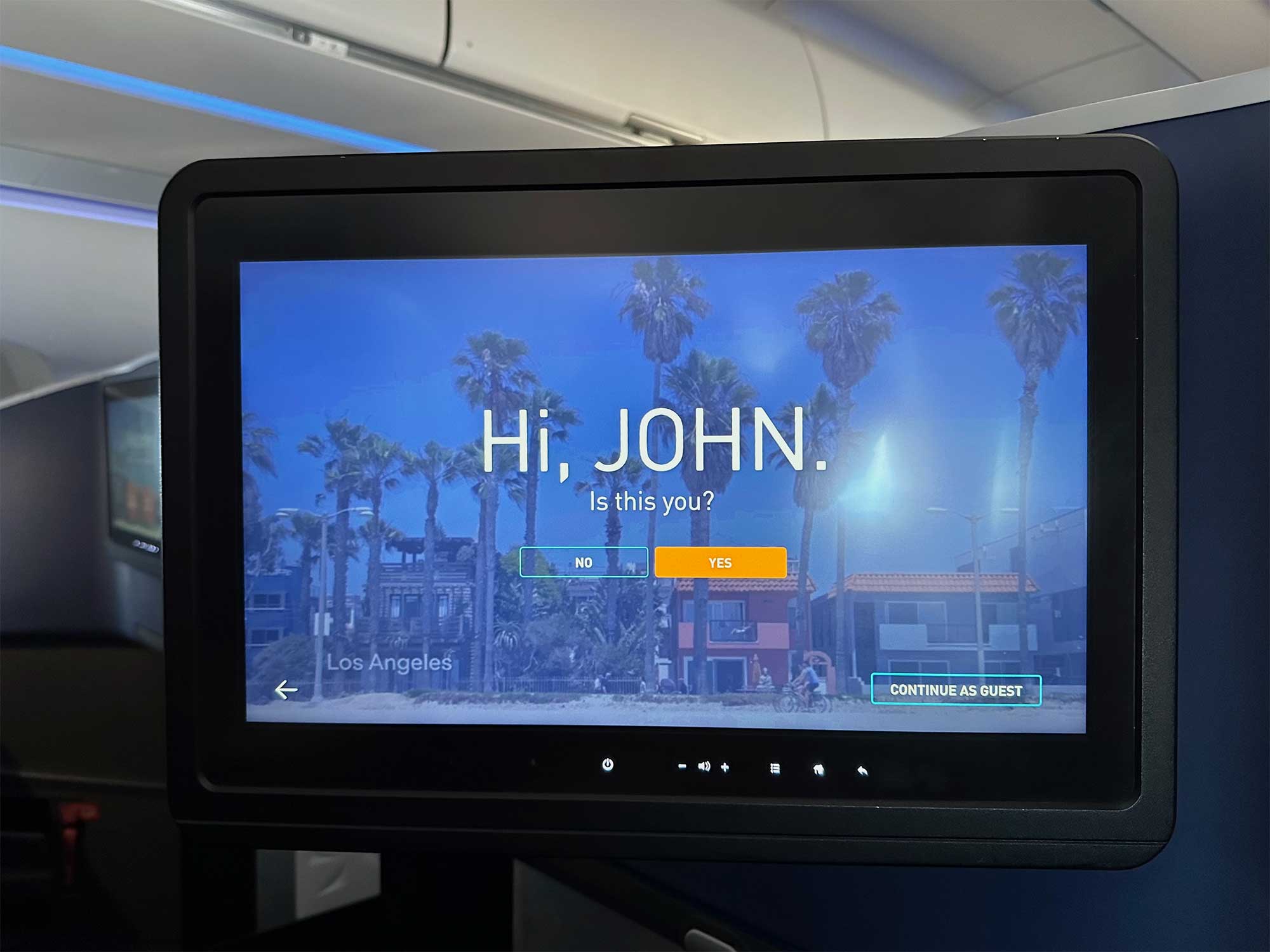
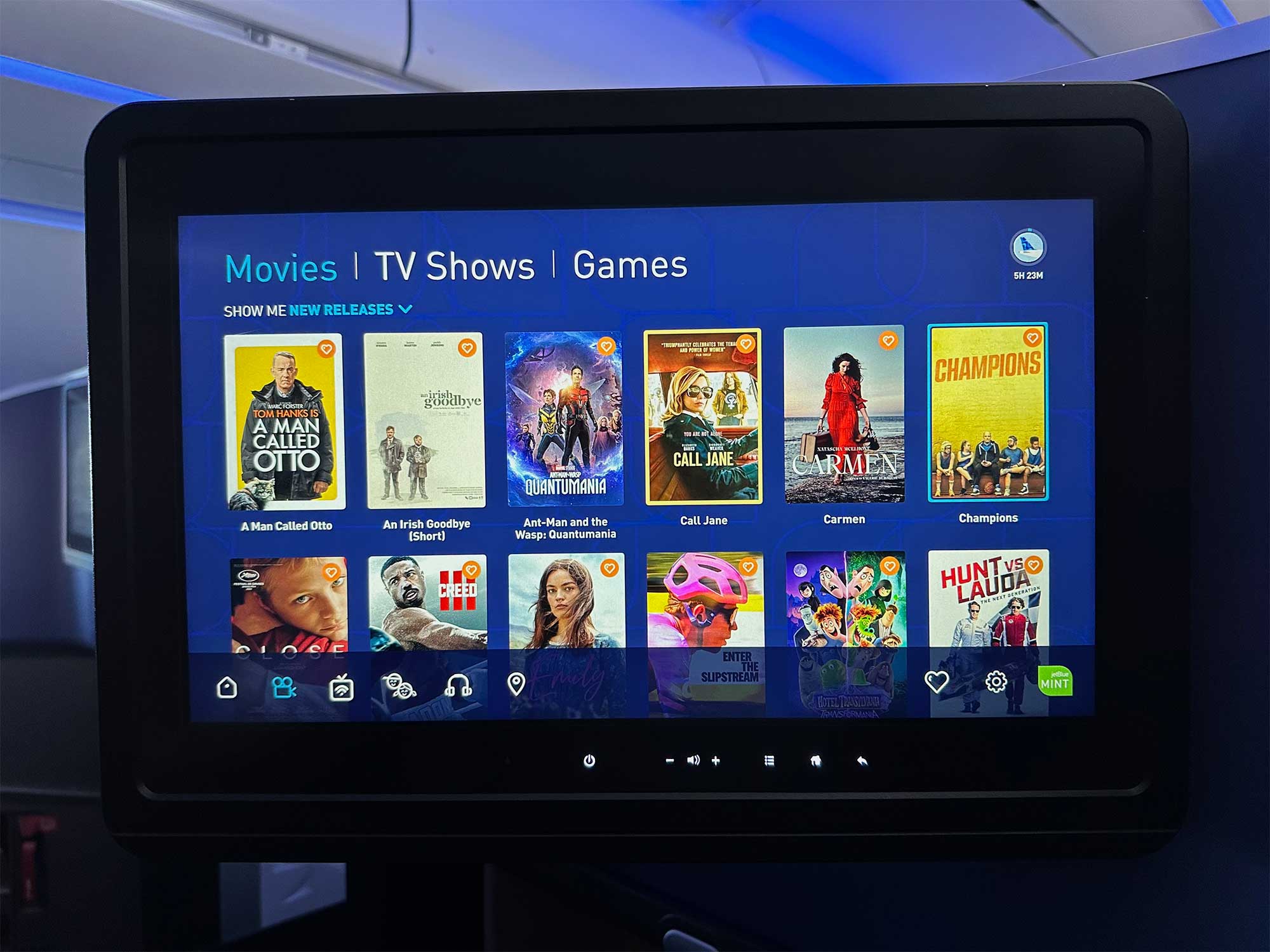
The Mint Suite features a 17″ HD touchscreen inflight entertainment display with a wide selection of movies and television shows. JetBlue has integrated some personalization into the IFE system, with the screen pulling my name from the passenger manifest. The system greeted me with “Hi, John,” which was a nice touch.
Since this was a short flight and I wanted to get some sleep, I only had time to watch one movie — Pinball: The Man Who Saved the Game. It was a great movie, and I highly recommend giving it a watch. Who knew Pinball was at one time illegal in many cities around the country?
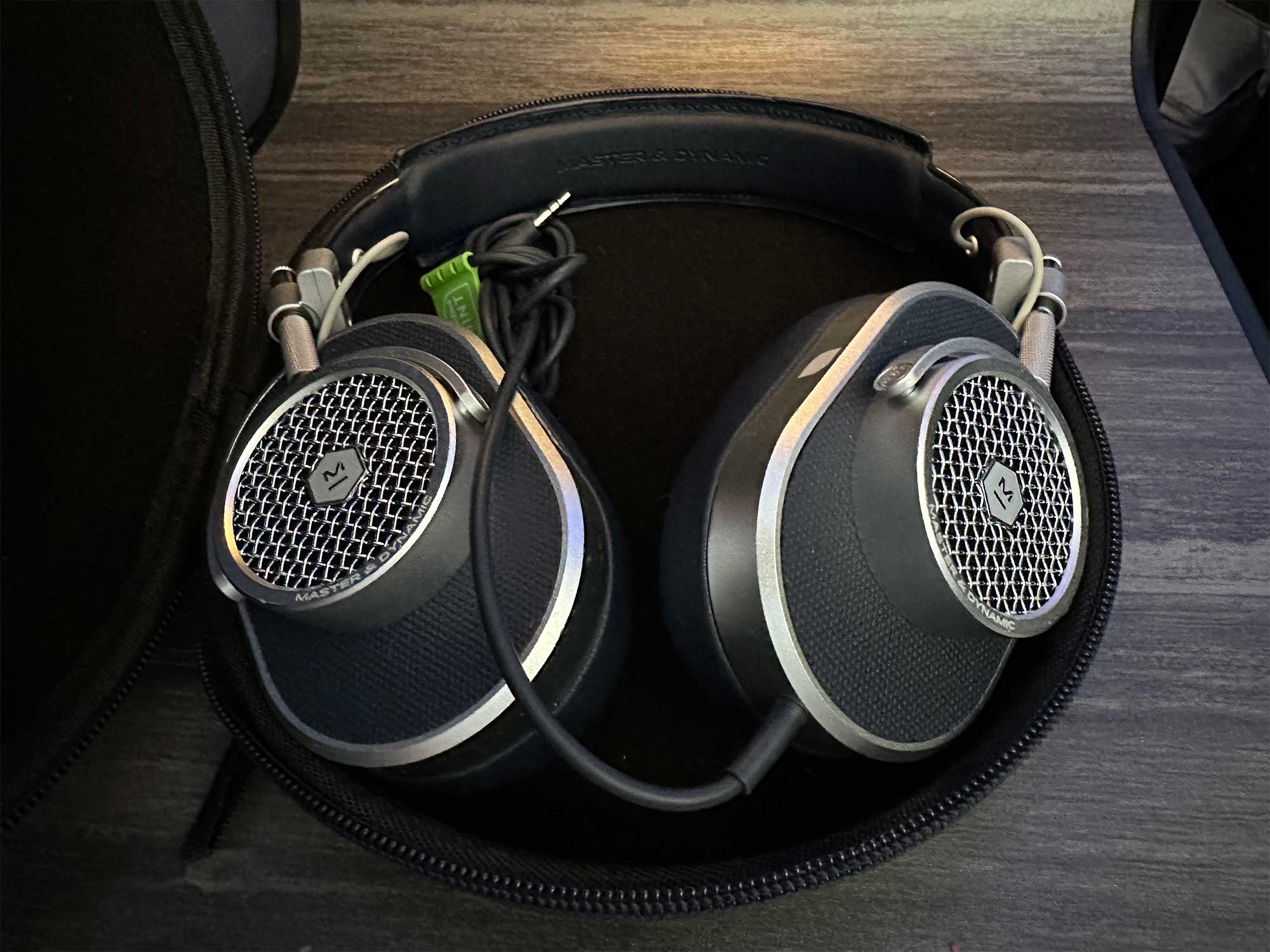
A set of noise-canceling headphones is provided to each business class passenger — while they are certainly an improvement over those available in economy class, I wouldn’t want to purchase a pair for daily use.
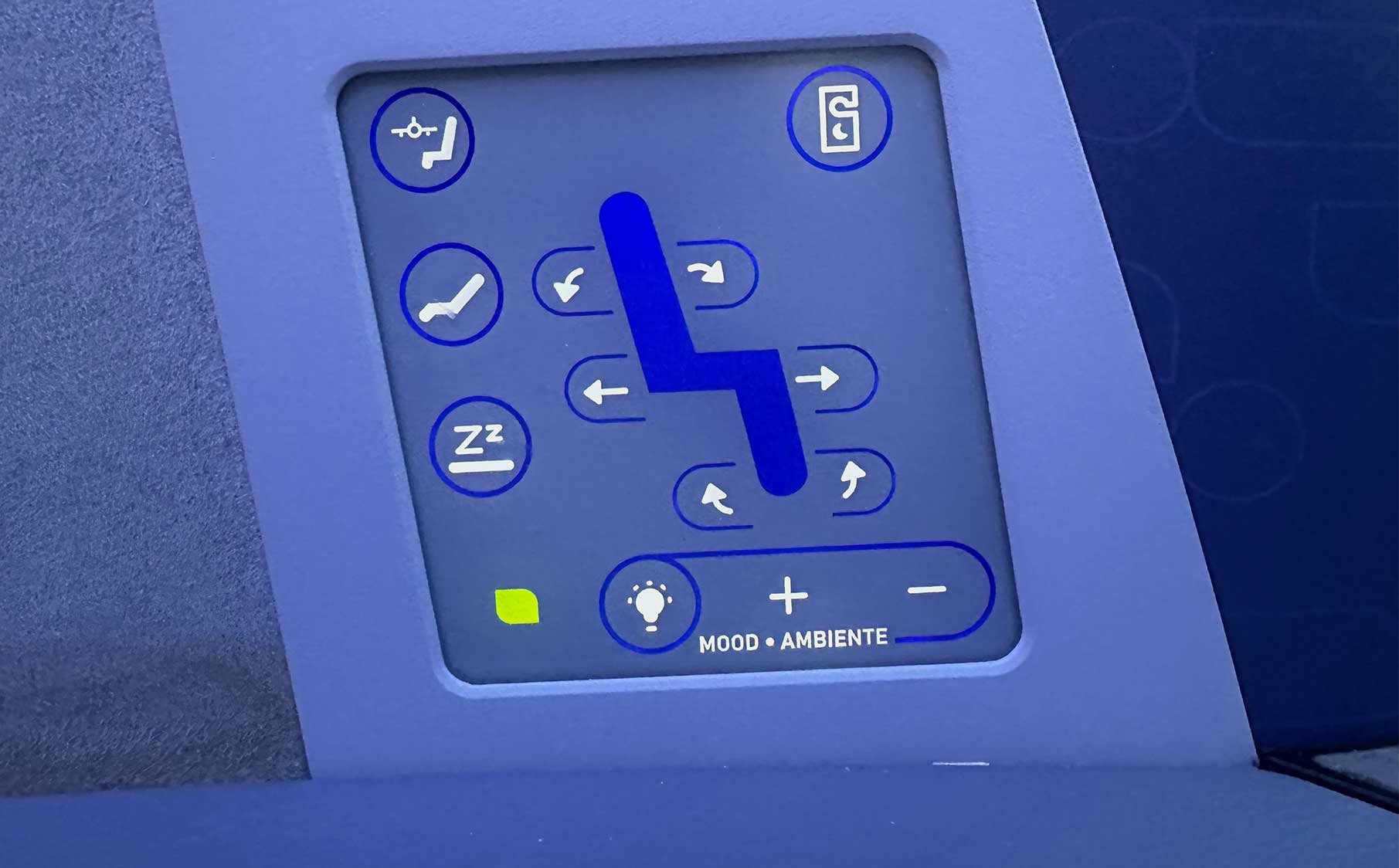
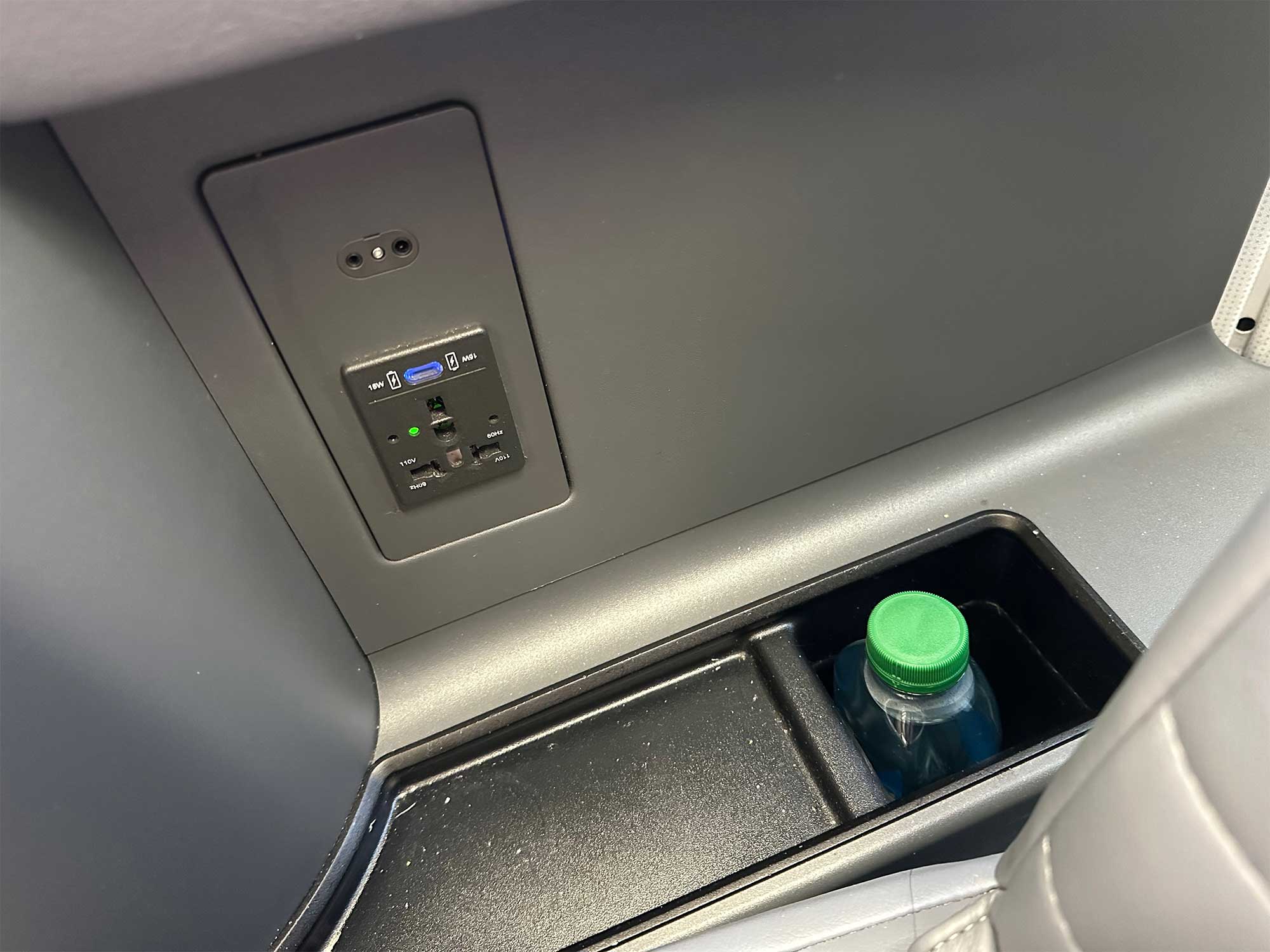
The seat is controlled with a touch of a button, and can be reclined or placed into a fully flat position for sleeping. Suite lighting can also be adjusted from this control pad, which is located to the left of the seat.
Power outlets are located to the left and right of the seat, and there is also a wireless charging pad for smartphones and other capable devices.
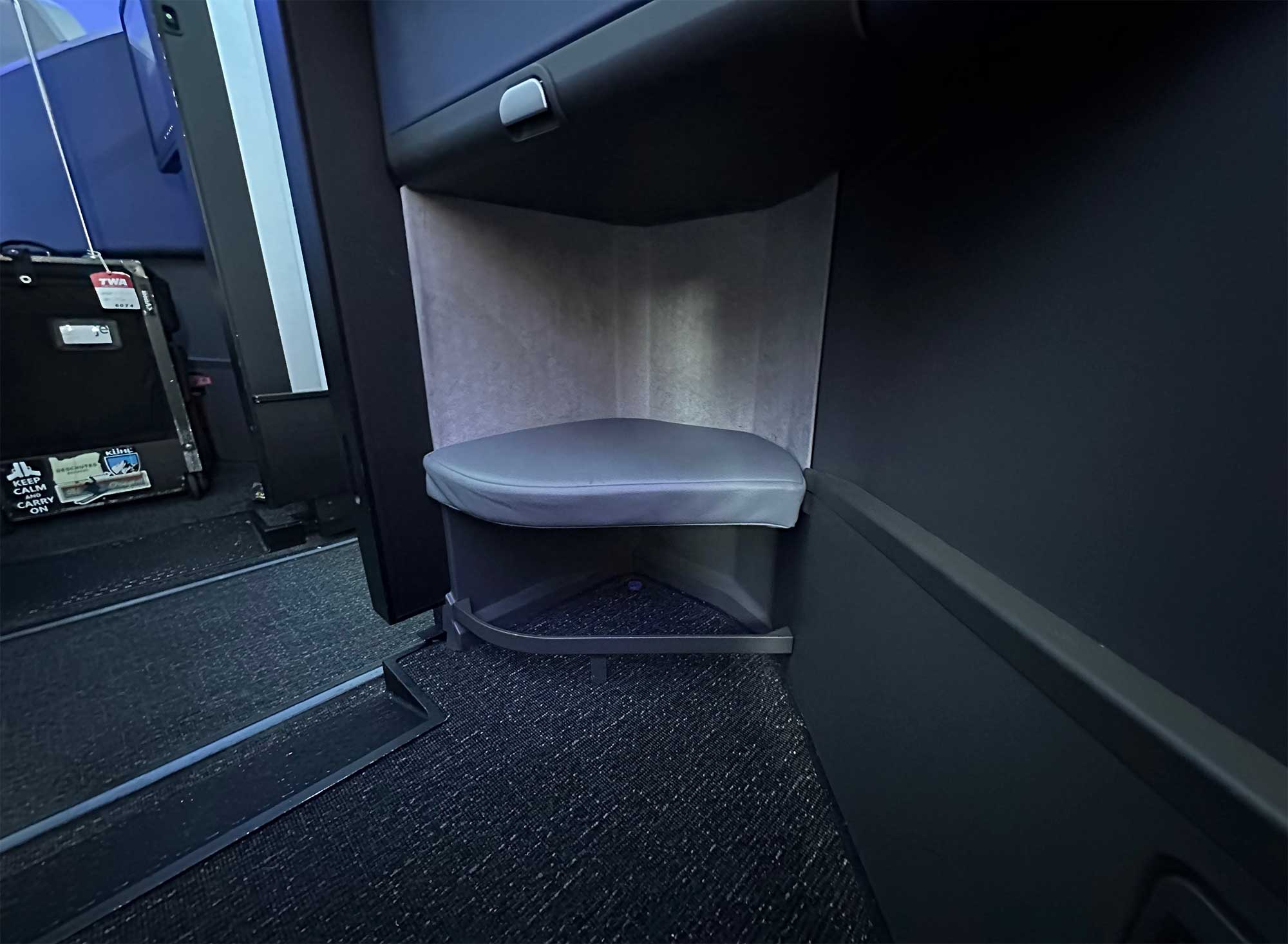
The suite’s footwell, located adjacent to the aisle and the suite entrance, is small and not suited for the storage of carry-on luggage. This was somewhat frustrating, as it required me to call a flight attendant to retrieve my backpack from the overhead bin. Storage was one of the challenges in this suite, together with its compact size and narrow profile.
Food & Beverage Service in JetBlue Mint Business Class
JetBlue has received widespread praise for its food and beverage offering in the Mint cabin and, while I found the meal portions to be adequate, in my opinion it left something to be desired.
This being an early morning flight, breakfast was served. I started with a glass of orange juice and a croissant, which was tasty.
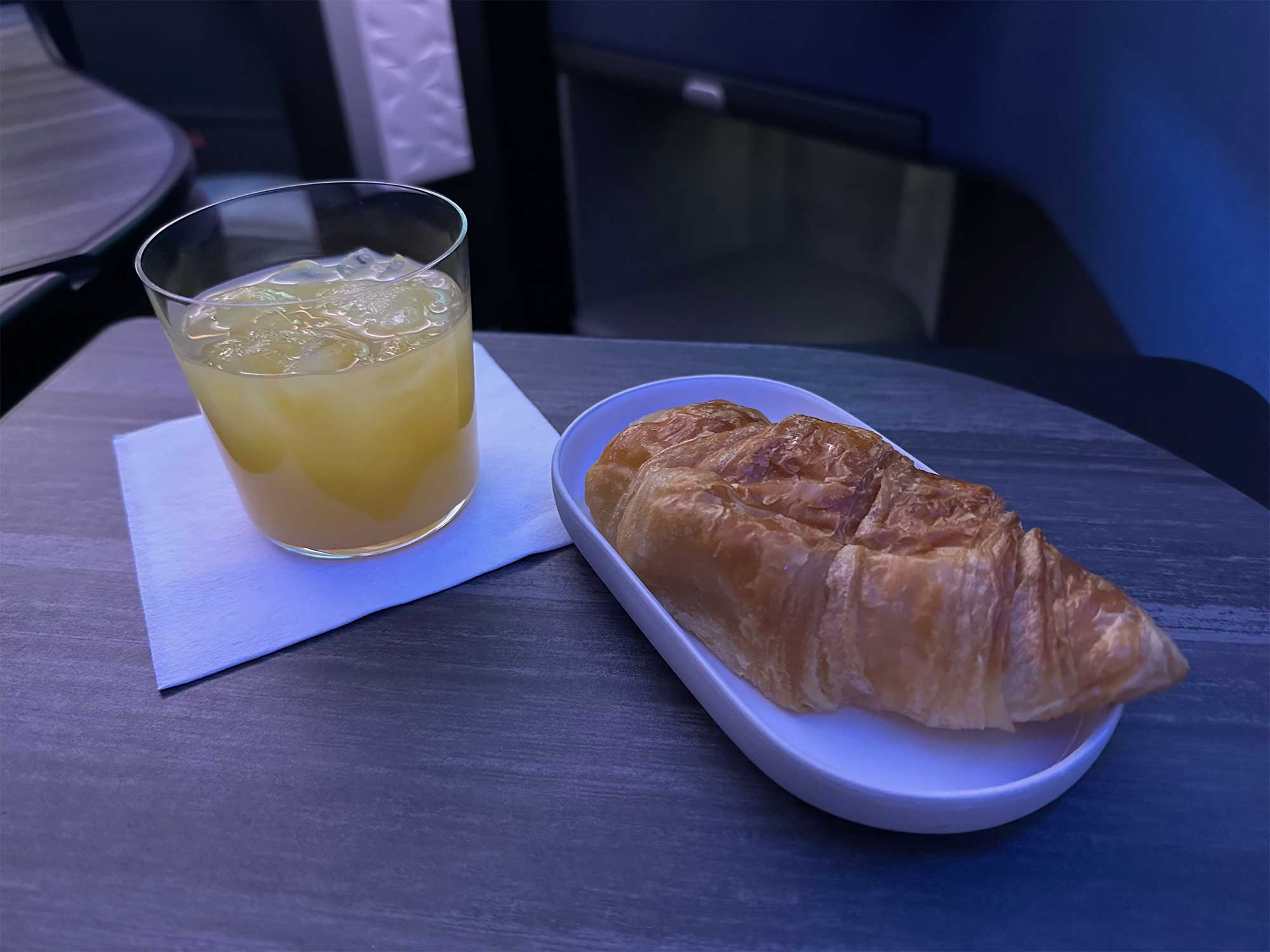
Mint customers are presented with a choice of small plates, with the option to select up to three from the following list:
- Blueberries with thyme syrup, mint
- Greek yoghurt with strawberries, walnuts
- Avocado toast with goat cheese, tomatoes, cucumbers, basil, crostini
- French toast on brioche with roasted raspberries
- Frittata with roasted potatoes, red peppers, herb & parmigiano salad
I chose the blueberries, French toast and frittata, and also opted for the side of bacon.

The presentation was great, but the meal itself wasn’t to my liking. The French toast was the stuff of a kid’s sugar dream, submerged in a syrup that was so sweet it proved inedible. The frittata was unremarkable, even bland, though the blueberries were a treat. If I were to take a future JetBlue Mint flight, I’d play it safe and bring my own meal onboard.
My disappointment in the meal was compounded by what proved to be an incredibly slow service — the main courses were not served until nearly two hours after departure. On a transcontinental flight where most travelers aim to sleep in preparation for a 9 a.m. Los Angeles arrival, that’s inexcusable.
What Makes the JetBlue Mint Suite the Most Inaccessible Seat in Air Travel
The most inaccessible seat in air travel? That’s a big claim, I know.
I’ve flown on more than 1,000 flights as a wheelchair user, with more than 50 airlines — and I’ve never seen anything worse. Never before have I encountered a seat that I couldn’t transfer into independently. That includes other seats that I have derided for their inaccessibility, including the Qatar Airways QSuite and British Airways Club Suite.
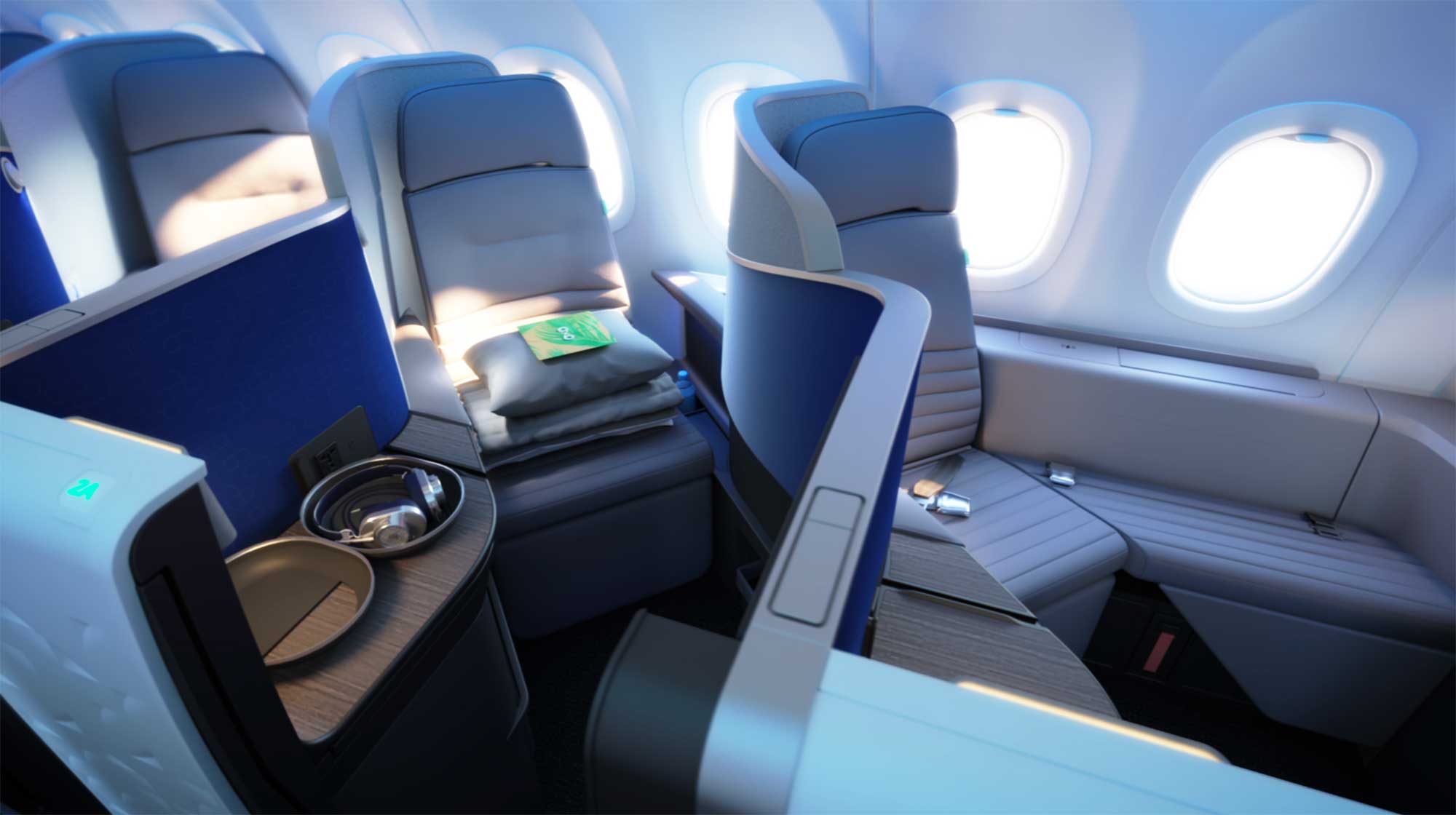
When I offered my perspective on the definition of accessibility (maximizing the independence of disabled people to the greatest extent possible), I used this seat as a prime example of a product that is called accessible but most certainly is not. I wrote that “even wheelchair users with exceptional upper body strength must now submit to being physically lifted by poorly trained staff” to access the seat. “The carrier’s attack on the independence of disabled travelers,” I continued, “is an appalling affront to human dignity and it is surely evidence of reduced accessibility.” When I wrote those words, I was only responding to the airline’s promotional photos of the seat — now, having experienced the product for myself, I can attest to the fact that I was right on the money.
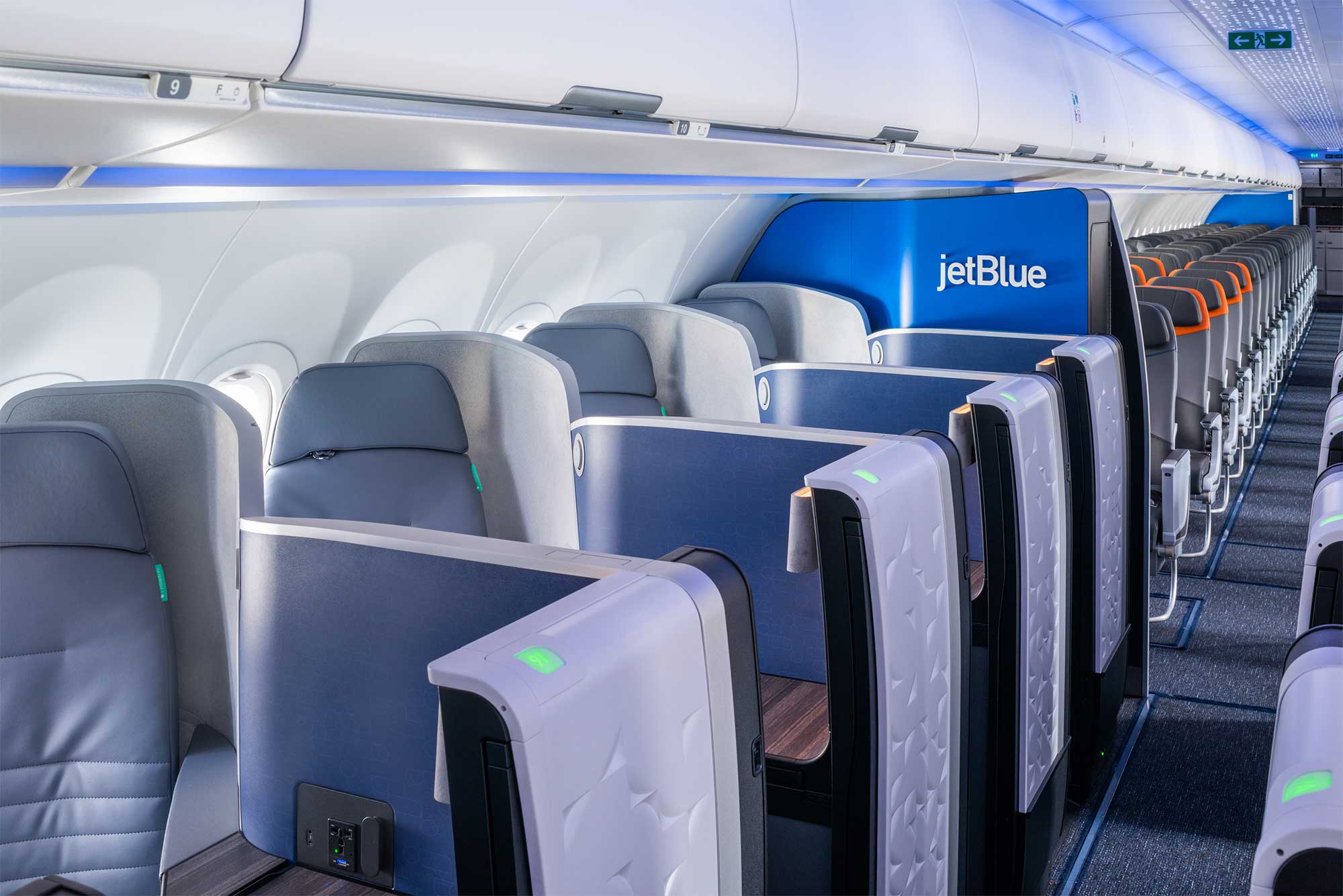
With the seat set against the airplane’s fuselage, surrounded by an immovable wall and set far away from the aisle, non-ambulatory passengers have no hope of transferring from the aisle wheelchair to the seat independently or safely.
Upon boarding the aircraft in Boston, two contracted assistance staff remarked that they had “never done this before” and admitted that JetBlue had provided no specialized training for helping wheelchair users in and out of the new Mint suite. A JetBlue supervisor subsequently came aboard, and the trio of people lifted me awkwardly into the seat, grabbing my arms and legs and stretching muscles that I never knew existed. The supervisor admitted that the seat wasn’t accessible, promised to make a note of it, and said that I was only the second wheelchair user to fly in the JetBlue Mint Suite from Boston. That other passenger’s transfer was equally perilous, I was told.
During the flight, despite desperately needing to use the bathroom, I was stuck. Flight attendants could offer no help in getting me out of my Mint prison, and there was no accessible lavatory on the aircraft anyway. I couldn’t help but wonder, what would happen to me in the event of an emergency evacuation?
Upon arrival to Los Angeles, I was presented with an entirely different transfer technique, this time using 4 or 5 contracted staff and JetBlue employees. I was asked to sit on a transfer sling, which wrapped underneath my bottom and around my legs. The team members each grabbed a handle and lifted me (one each from the suite on either side and two in front from the aisle). The sling’s straps dug into my legs, restricting circulation to the point that it became incredibly uncomfortable and my legs began to feel numb.
As staff attempted to move me to the aisle, they realized that their arms were not long enough to reach over the wall. I began to slip, my head was near the aircraft floor and my legs were lifted high up into the air — I was upside down! A JetBlue employee climbed over the wall and jumped onto the seat, grabbing me my the collar of my shirt, which restricted my breathing. I used my hand to grab the front of my collar to restore air flow.
As my body was turned right-side up and I was thrust into the aisle chair, I noticed the flight attendants hiding in the forward galley with their eyes averted. They too were embarrassed by this chaotic, dangerous and dare I say potentially deadly transfer technique. It was, without a doubt, the most undignified and distressing experience of my life.
The Department of Transportation and the Secrecy of “Equivalent Alternative Determinations”
The Air Carrier Access Act requires that 50% of seats feature a moveable aisle armrest to permit safe, independent transfers from an aisle chair into the seat. The JetBlue Mint Suite doesn’t have a moveable aisle armrest and instead has a wall, which required the carrier to apply for a regulatory waiver from the U.S. Department of Transportation. That waiver is referred to as an “Equivalent Alternative Determination” and requires the airline to submit evidence that it “provides substantially equivalent accessibility to passengers with disabilities” that is comparable to compliance with the rule in question.
On May 20, 2019, JetBlue applied for an EAD to relieve itself of the requirement to provide a moveable aisle armrest on its updated Mint Suites. In its application, the airline stated that it would “train employees on how to properly transfer customers into the Mint seats in a safe and dignified manner.” To support its application, the airline stated that it was “sending a team of crewmembers to visit the [seat] manufacturer in order to prepare a video demonstrating the ease with which passengers with mobility impairments can transfer (self or assisted) into the Mint seats.” That video was ultimately submitted to the DOT, however it was given “confidential treatment,” which prevents its disclosure through Freedom of Information Act requests. JetBlue argued that “public disclosure” of the video “would cause substantial harm” to the airline.
Blane Workie, the DOT’s Assistant General Counsel for the Office of Aviation Enforcement and Proceedings, granted JetBlue’s request for an EAD, on the condition that JetBlue provide “specialized training to its employees and contractors, as well as employees and contractors of any other entity that will be transferring persons with a mobility impairment to or from the Business Class seats.” By granting the waiver, Workie certifies that JetBlue’s transfer process provides “substantially equivalent accessibility to passengers with disabilities.” Without access to JetBlue’s video demonstration, the public cannot fully assess the Department’s decision, however I can attest that my experience in the JetBlue Mint cabin was not even loosely equivalent, much less “substantially equivalent,” to any of the 1,000+ flights that I have previously taken as a wheelchair user.
Prior to traveling in the JetBlue Mint cabin, I made multiple requests to the airline for information about the approved transfer process. I submitted a FOIA request to see the video submitted as part of the EAD application, but the government refused to release it. After experiencing inconsistency in the transfer technique and encountering staff who were unfamiliar with the airline’s training on how to properly transfer disabled passengers, it is critical that the video be disclosed publicly. I intend to explore other routes, through the courts if necessary, to gain access to the video and training materials.
Given my experience, and the recent example of what can go wrong during a failed transfer (read my reporting on the case of NJ Foster, whose breathing tube was dislodged while deplaning from a United Airlines flight), it may not be long before a disabled passenger faces serious injury at the hands of JetBlue.
More than a month ago, and prior to publishing this story, I reached out to JetBlue’s corporate communications team with questions about the transfer process for disabled passengers and the training provided to team members and contractors. My request for comment was ignored.
Final Thoughts
For wheelchair users flying in JetBlue’s Mint business class, the risk of substantial injury should not be overlooked — clear gaps in training and the application of (wildly) inconsistent transfer techniques at departure and arrival airports could literally leave travelers blue in the face.
JetBlue introduced an inaccessible premium cabin seat that strips disabled people of independence, risks serious injury, and leaves many disabled travelers unable to access the bathroom during flight. While no airline seat offers perfect accessibility, JetBlue’s Mint Suite on the Thompson Aero Vantage Solo platform is particularly inaccessible compared to business class seating offered by other airlines. For disabled passengers wishing to fly in safety, comfort and with their dignity intact, I strongly advise against the JetBlue Mint experience.
If you’d like to support WheelchairTravel.org and my coverage of accessible travel, wheelchair-friendly destinations, and stories that are important to the disability community, please consider upgrading to a paid newsletter subscription. Your support makes it possible to cover critical stories that hold airlines accountable and safeguard the right to equal access everywhere.

